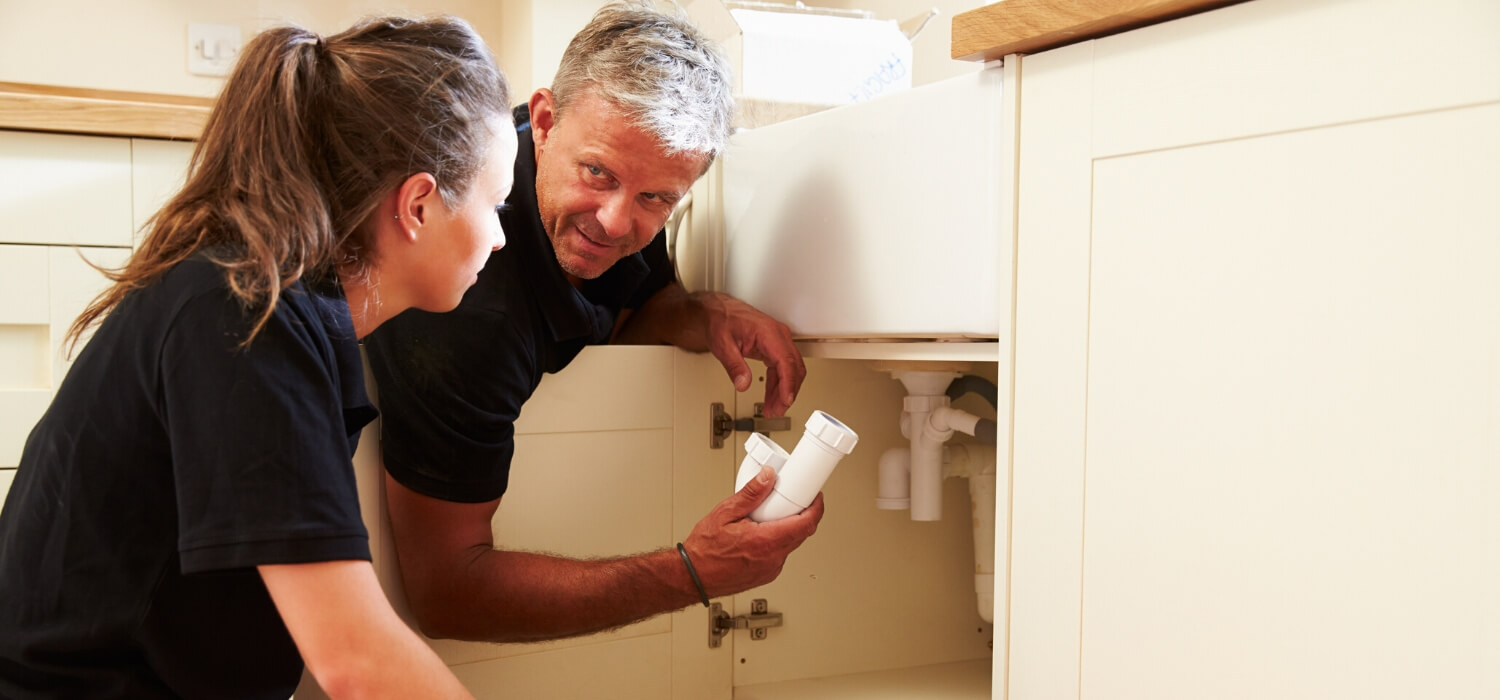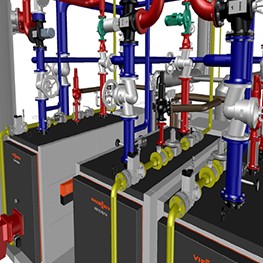The Fundamental Elements of Your Property's Plumbing System
The Fundamental Elements of Your Property's Plumbing System
Blog Article
Right here in the next paragraphs you can find a good deal of sensible insights on the subject of Exploring Your Homes Plumbing Anatomy.

Comprehending how your home's plumbing system functions is necessary for every single homeowner. From delivering clean water for drinking, cooking, and bathing to securely getting rid of wastewater, a well-maintained plumbing system is important for your household's health and comfort. In this comprehensive guide, we'll discover the detailed network that composes your home's plumbing and offer pointers on upkeep, upgrades, and managing typical problems.
Introduction
Your home's pipes system is more than just a network of pipelines; it's a complicated system that guarantees you have access to tidy water and reliable wastewater elimination. Recognizing its parts and just how they work together can help you prevent pricey fixings and make certain every little thing runs efficiently.
Fundamental Parts of a Pipes System
Pipelines and Tubes
At the heart of your plumbing system are the pipes and tubing that carry water throughout your home. These can be made from numerous materials such as copper, PVC, or PEX, each with its advantages in terms of toughness and cost-effectiveness.
Fixtures: Sinks, Toilets, Showers, and so on.
Components like sinks, commodes, showers, and bathtubs are where water is used in your house. Recognizing just how these components attach to the pipes system aids in diagnosing problems and preparing upgrades.
Valves and Shut-off Points
Valves control the circulation of water in your pipes system. Shut-off shutoffs are crucial during emergencies or when you need to make repair work, allowing you to isolate parts of the system without disrupting water flow to the entire home.
Water System
Key Water Line
The main water line links your home to the metropolitan water system or an exclusive well. It's where water enters your home and is dispersed to various fixtures.
Water Meter and Pressure Regulatory Authority
The water meter actions your water usage, while a pressure regulator guarantees that water streams at a safe pressure throughout your home's plumbing system, stopping damage to pipelines and fixtures.
Cold Water vs. Hot Water Lines
Comprehending the distinction between cold water lines, which supply water directly from the primary, and warm water lines, which bring warmed water from the hot water heater, assists in troubleshooting and planning for upgrades.
Drain System
Drain Pipes Pipeline and Traps
Drain pipelines bring wastewater far from sinks, showers, and bathrooms to the sewage system or sewage-disposal tank. Catches stop sewage system gases from entering your home and also trap debris that could cause clogs.
Ventilation Pipelines
Air flow pipelines enable air into the drainage system, protecting against suction that might slow water drainage and trigger traps to vacant. Appropriate air flow is crucial for preserving the stability of your pipes system.
Importance of Proper Drain
Making sure appropriate drain avoids backups and water damage. Routinely cleansing drains pipes and maintaining catches can protect against expensive repair work and extend the life of your plumbing system.
Water Furnace
Kinds Of Hot Water Heater
Hot water heater can be tankless or conventional tank-style. Tankless heating systems heat water on demand, while containers store warmed water for prompt use.
Upgrading Your Pipes System
Factors for Upgrading
Updating to water-efficient components or replacing old pipelines can improve water top quality, minimize water expenses, and raise the value of your home.
Modern Plumbing Technologies and Their Benefits
Explore innovations like smart leakage detectors, water-saving bathrooms, and energy-efficient water heaters that can conserve money and reduce environmental influence.
Expense Considerations and ROI
Compute the in advance costs versus long-term financial savings when thinking about plumbing upgrades. Lots of upgrades pay for themselves via decreased energy expenses and fewer repair services.
Just How Water Heaters Link to the Pipes System
Comprehending just how water heaters attach to both the cold water supply and hot water circulation lines helps in detecting issues like not enough hot water or leakages.
Maintenance Tips for Water Heaters
On a regular basis purging your water heater to remove debris, checking the temperature level setups, and checking for leaks can expand its lifespan and improve energy performance.
Typical Pipes Concerns
Leakages and Their Causes
Leakages can take place due to aging pipes, loose installations, or high water stress. Resolving leakages without delay prevents water damages and mold growth.
Clogs and Obstructions
Blockages in drains pipes and toilets are typically triggered by purging non-flushable things or a build-up of oil and hair. Making use of drain displays and bearing in mind what drops your drains pipes can prevent clogs.
Signs of Plumbing Problems to Watch For
Low tide stress, sluggish drains, foul odors, or unusually high water expenses are signs of potential pipes issues that must be attended to quickly.
Pipes Maintenance Tips
Regular Inspections and Checks
Set up annual pipes examinations to capture concerns early. Try to find signs of leaks, corrosion, or mineral build-up in taps and showerheads.
DIY Upkeep Tasks
Simple tasks like cleansing tap aerators, checking for toilet leaks making use of dye tablet computers, or shielding subjected pipes in cold environments can stop major plumbing issues.
When to Call a Specialist Plumbing Technician
Know when a plumbing concern requires specialist expertise. Trying complicated repair work without proper expertise can cause more damages and greater repair prices.
Tips for Minimizing Water Usage
Straightforward routines like dealing with leakages immediately, taking shorter showers, and running complete tons of laundry and recipes can conserve water and reduced your utility bills.
Eco-Friendly Pipes Options
Consider lasting plumbing materials like bamboo for flooring, which is durable and environment-friendly, or recycled glass for countertops.
Emergency Preparedness
Actions to Take During a Plumbing Emergency situation
Know where your shut-off valves are located and just how to turn off the supply of water in case of a burst pipe or significant leak.
Significance of Having Emergency Situation Get In Touches With Handy
Keep call information for neighborhood plumbing professionals or emergency solutions conveniently offered for quick action throughout a pipes dilemma.
Ecological Impact and Conservation
Water-Saving Components and Appliances
Setting up low-flow faucets, showerheads, and bathrooms can significantly minimize water use without giving up efficiency.
DIY Emergency Situation Fixes (When Applicable).
Momentary solutions like using duct tape to patch a dripping pipeline or placing a container under a trickling faucet can reduce damages until an expert plumbing technician shows up.
Conclusion.
Understanding the composition of your home's pipes system encourages you to maintain it properly, conserving time and money on repair services. By complying with normal maintenance routines and staying notified concerning modern-day pipes technologies, you can ensure your plumbing system runs successfully for many years ahead.
The Anatomy of Your Home s Plumbing System
Understanding the anatomy of your home s plumbing system is essential for any homeowner. It not only helps in identifying potential issues but also facilitates effective communication with professionals when repairs or upgrades are needed. Your home s plumbing system is more than just pipes and faucets; it s a complex network that ensures the efficient and hygienic flow of water in and out of your house. In this blog, we ll dissect the crucial components of your home s plumbing system. For those in Antelope Valley, Brock Plumbing is your trusted partner for all your plumbing needs, ensuring your system functions smoothly and efficiently.
Water Supply System
Main Water Line: This is where your home s plumbing system begins. The main water line connects your home to the public water supply or a private well. Pipes and Shut-off Valves: Pipes distribute water throughout your home. Shut-off valves are crucial for controlling the flow of water and making repairs without shutting off the entire system. Drainage System
Drain Pipes: These pipes carry waste and water away from sinks, toilets, and showers. Vents: Vents allow sewer gases to escape and help maintain proper pressure in the drainage pipes, ensuring efficient flow of wastewater. Traps: Every fixture has a trap, a U-shaped pipe that holds water and prevents sewer gases from entering your home. The most common is the P-trap under sinks. Fixtures and Appliances
Fixtures and appliances are the most interacted with parts of your plumbing system. They include sinks, toilets, showers, dishwashers, and washing machines. Each fixture and appliance has its own supply and drainage connection, ensuring they receive clean water and can dispose of wastewater effectively.
Water Heating System
Your water heater is a crucial component, providing hot water to various fixtures and appliances in your home. It can be tank-based or tankless, with each type having its own set of advantages and maintenance requirements. Regular maintenance is essential to ensure efficient operation and extend the lifespan of the unit.
Sump Pump
In areas prone to flooding or with high water tables, a sump pump is an essential part of the plumbing system. It s installed in the lowest part of your basement or crawlspace and pumps out water that accumulates, preventing flooding and protecting your home from water damage.
Septic System
Homes that are not connected to a municipal sewer system have a septic system and an underground wastewater treatment structure. Understanding how to maintain your septic system is crucial to prevent backups, odors, and early system failure.
Conclusion
Your home s plumbing system is a complex and essential network, ensuring the efficient and hygienic flow of water in and out of your property. Understanding its key components helps in maintaining it properly and identifying issues before they escalate into major problems. For residents in Antelope Valley, Brock Plumbing is dedicated to providing top-notch services, ensuring that every part of your plumbing system is in perfect working order. Trust our team of professionals to handle all your plumbing needs, ensuring your home remains comfortable, safe, and well-maintained.
https://brockplumbinganddrains.com/blog/the-anatomy-of-your-homes-plumbing-system/

I have been very enthusiastic about and I am praying you liked my post. Feel free to take the time to promote this entry if you appreciated it. We treasure your readership.
Website Report this page